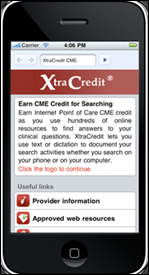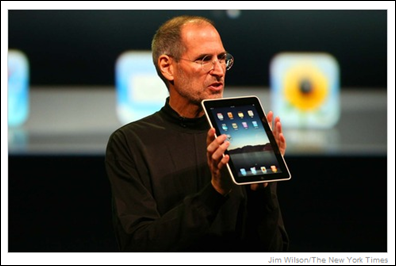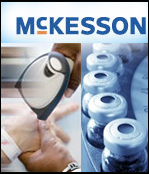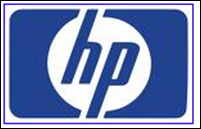Neil B. Zimmerman, MD is a physician with National Hand Specialists of Baltimore, MD.

Give me a bit of background on your practice.
We, my partners and myself, have a very, very large hand practice. I think we might be the biggest in the country. In fact, I know it’s the biggest in the country at the present time. We’re affiliated with the National Hand Center in Baltimore. My office, which is nine physicians — we’re all hand surgeons.
“Hands” is a bit of a misnomer, but hand is the entire upper extremity, fingertips all the way up to the shoulder. We are a combination of orthopedic and plastic surgery specialists who just do upper extremity stuff, but that can involve arthritis, nerve compression like carpal tunnel, a lot of microsurgery or tissue transfers.
The way that the practice works is that it’s a very, very high volume practice; on a typical day starting at 8:30 a.m. until about 5:00 p.m., I see somewhere between 40 and 50 patients and I do that three days a week. My partners’ practices are similar.
Needless to say, we were anxious — beyond anxious — to even make a transition into electronic medical records of any type, simply because of the volume. It is a complex practice; it’s not cookie cutter as far as these patients. A lot of them are second, third, fourth opinions. A lot of them are legal matters that require all these long reports that we have to write.
We were highly trepidatious about a lot of the programs that were out there. The physicians were totally maxed out as far as what we could do seeing patients. We did not have, physically, any face-time available for the patients.
My office manager, another person, and then myself looked at a lot of these different electronic medical records systems. Every one of them came in there and they said, “Well, here’s what we can do for you. We can do this template, and that template.” I said, “Time out, hold it. My job and what I’ve been trained to do, and what I enjoy doing and how I really make a living is not the clerical or support end of this. It’s my face-to-face time with these people and being able to listen to them and care for them and interact with them.”
I said, “If I’m just going to be doing a template here, there’s no way I can do what I want to do.” I said, “We need somebody who’s going to respect that.”
These folks from SRS came in there and said, “OK, our job is to let you guys do what you do. We’ll figure out the rest that goes with it.” It probably took nine months, six to nine months. We talked to the transition team. They called and we had conference calls. We dissected the way that everything in our office moved. From patients getting in the door until me seeing them and taking care of the notes. We were, at that point, doing regular transcription; and we discussed how the transcription came back and how it was routed it and everything.
I’m sure as every other medical group, we had one or two guys that were interested in making a change and seven guys who weren’t. Some of which were vehemently opposed to the electronic medical records of any type. We had long, extensive planning on how to move forward through this. Instead of trying to intimidate people into using it, we used the carrot approach. I started with the guy who sits next to me who was also upbeat and really up on the thing.
We went from having a group of nine people who didn’t even want to be in the same room with any electronic medical records to try and decide who would be next to get on the band wagon with doing this thing. It has worked out extraordinarily well for us.
We were real careful, as far as our integration, inasmuch that I didn’t want to do everything. I figured we could just get up and running with our EMR system and hold off on the e-prescribing. I’m an orthopedist mainly, so with additional radiography we’ve got coming this upcoming year, we just didn’t want to do too much for fear of breaking it down.
Among orthopedic practices, we had heard so many nightmares. It’s like, “Oh my God, I can’t see patients,” the doctors are saying. “We’re not doing this, forget it, I’m outta here. Just let me take care of patients and take the thing out of my office,” and that kind of stuff. So we were really worried about this thing, but it has worked out just great for us.
What is it that SRS did differently than the other programs that you looked at?
What they did is they looked better from my point of view as a physician. This sounds arrogant, but reality is that it has to be doctor-centric. It has to be based upon me being able to see my patients and take care of them without really changing a lot of what I do in order for me to continue to provide the care I wanted.
For me to sit down, sit in that room, and pull down a bunch of pull-down menus and click-in boxes and do all this typing — that’s not what I do for a living, nor do any other doctors that I know. A lot of people in the hospitals have EMR systems like that and the physicians all dread doing it. But I still carry my digital Dictaphone in my pocket. I see my patients, I crack out my dictation very expediently, and I’m in with the next one. Then my stuff comes back to me, all my paperwork and my labs and everything.
But I’m very, very mobile now. I never know when I’m done with surgery. Some days it’s 1:00 p.m., some days it’s 4:00 p.m., but I just said, “Okay, I’m out of here,” because I can take my laptop, or I can even use my home computer and just VPN into our system and I’ve got every piece of paper that I can if I’m sitting in the office. For me, it got me out of the office today — I was done at 1:00 p.m. — it got me out about three hours earlier because I wasn’t sitting doing all my stuff there, which I normally would be, or taking home all those charts.
How do you interact with the EHR? What type of information are you looking up? And what information are you actually keying in?
I’m keying in very little, looking up a ton. I have it with me at all times. I have a tablet when I’m seeing patients or when I’m in the operating room. I go and I look at it before I even talk to anybody, to review their medical history. I mean, I know what procedure I’m doing, but I don’t remember all the little details like who’s allergic to what or exactly what the numbers of their nerve studies were.
I go to the computer, I look at their name, and I remember what their nickname is. If they’re allergic to something. And then I go out there and I look like I’m a genius. They’re like, “Oh, you remembered I go by Cookie” or something like that. So I make all these little notes to me.
Then when I’m done with my surgery, I dictate my notes. That will come back within a day. Then all I have to do is just quick-sign it because I dictate it to myself. I don’t have to proof it. Some of the more complicated reports that I do, like medical/legal stuff, have three or four pages. I have these IMEs that come with a list of questions from attorneys or insurance companies. I do a bunch of those. I see them in the office and I dictate my report.
A couple days later, it comes back into the SRS system and what I do then is I open up the document, and it opens up into Word, and I edit it. I mean, the regular routine carpal tunnel or kid with a wrist fracture stuff, I don’t need to edit. But these legal ones that someone’s going to be looking at with a yellow highlighter, I go through it word by word and I edit it and do all my other stuff. Then I take the edited document, I send it to my secretary or whoever, who sends it to whoever wanted it. But I can do all that stuff at home now, which is so much better than sitting there doing it on paper.
What practice management system do you use?
We’re using Misys now. We have all kinds of different Misys systems. Do you want to hear how we got to the SRS thing? Because we originally were going to do the Misys EMR. Misys scared us because we were a real early adopter or accepter of their practice management system. They said, “Oh, a couple years we got coming down the line with EHR, you’re going to like it.” They brought it in. I probably looked at it three times. Every time they brought that thing in there it wouldn’t work.
Then they kept saying, “You can do this, you can do this, you can do this.” I said, “I don’t want to do this.” I said, “I want to do what I do.” He was like, “Well, if you use this you have to make a template and do all this stuff.”
Then we went and looked at a couple other practices that were using that system successfully, but it just wasn’t fitting for us. I’m sure it’s fine for some people or for some kind of practices. But surgeons in particular, I think — again this sounds bad; forgive me — there’s a little bit of the personality … it’s a little more of an aggressive personality. It’s like OK, I’ve got to operate on these people, this is the way I want to do it rather than kind of ‘I’ll go with the flow’ thing. I mean, you wouldn’t want a surgeon that came in and said, “Well, I think I could fix this.” You go, “I can fix it.” It’s the same kind of thing. They want the system to work the way they did it.
So anyway, that’s our long story. We’ve been up and running now for 15 months, I think.
Do the SRS and Misys systems integrate?
It’s been great. It was far less of an issue than I thought. It downloaded the demographics from the practice management system. We’re buying a digital radiography system. I looked at a lot of them, but I wanted one that SRS would stand behind. They are marketing one now called Fusion. Reason being that as much as it just totally integrates and slips into that thing and the startup was so good with the EHR thing, I said, “If we’re doing it, these people did such a good job before. This is the one I want to go with.” Next couple weeks we’re changing — some of us are changing — to Dragon as far as with digital dictation. That’s going to be a change for me though.
Did it concern you at all that the SRS is not CCHIT certified?
CCHIT, what’s that?
CCHIT? I guess it didn’t concern you if you’re not familiar with it! It’s a certification that will likely be required in order to get economic stimulus money.
No, and I’ll tell you why. I thought about that, at length, and the information that you’ve got to provide to get that stimulus. First of all, I don’t see how I could ever do that in my private practice because one of the requirements is that I have to be able to distribute to my patients information about preventative care.
It’s like, that’s just one of them, but the information that would be required for me to provide would require probably, a substantial part of another employee, which would override the $40-some-odd-thousand that we would make, if we even get it back, from that stimulus money. So I said, “Forget it.” I said, “It’s a good idea, but it’s cheaper for me to not worry about that and move forward than to try and comply with what they wanted out of that.” So, no, that does not bother me one bit.
I was concerned at first. I go, “What the hell is this all about?” Then I realized and I did some more checking and I go, “No, I don’t want to do that anyway.”
What kind of return on investment have you seen so far?
Probably minimal to none, and I think that I’m about as busy a private practice as you can get, I think. I think the reward is going to come later, but if you’re really honest with the money that you’ve got to put into an EHR, it’s going to be a negative investment for quite a while.
We have not eliminated any employees. We’ve transitioned filers to scanners. We’re going to redo our office, at some point, to have more patient care space, which I actually think is going to translate into money. I’ll tell you what will eventually translate into money, but it’s somewhat non-tangible, and that is that our billing efficiency has gone up, I think in part due to this because we no longer have to play where’s-the-chart to do the billing.
I was worried when I started this that I wouldn’t be able to see as many patients, but my productivity actually went up. But it’s really hard to quantitate that, and that wouldn’t apply to all practices. But we’re lucky enough to have to turn people away. So if we could see more, it’s great. But if we weren’t running ‘at mass’ appointments already, it wouldn’t ever come to be.
Last question here – why do you feel that EMR adoption continues to be so low among physicians?
Honestly, physicians are scared to death; and we’re scared to death about the healthcare thing coming down. We don’t know whether we’re going to get cut big time, or we’re not going to get cut — temporarily. A lot of physicians feel very much under fire. This is the first time in my 23 years of practice that I’m looking at a pretty dismal outlook for the upcoming year as far as income. Even if I see as many patients, I think I’m going to make less money with the same productivity level. That’s the number one reason.
But if you want to turn the clock back to before that whole stuff started, the main reason is it’s expensive. We’re nine people. It’s a nine people, high-volume practice and it costs us a lot of money. I think that’s something awfully large to bite off for a private practice. Especially if you’re really honest and say, “What’s the short-term return? What’s the long-term return?” It’s huge, just because of your productivity and not filing your stuff. Right off the bat, nobody’s writing you a check; you’re not going to see anything back on it. It’s a long-term bond.
I could tell you what some of my partners said. It was, “I’ve been doing this for 30 years. I’m not changing for anybody what the hell I do.” I mean that was a real common one. It’s like, “Screw this. What do I have to spend money for?” Those of us that prevailed said, “OK, long-term, in order to store our files, we’re going to make more money. It’s going to be more lucrative if we do this thing electronically.” But they’re looking for a check that’s not coming.
I hope I don’t hurt anybody by saying that about the return on investment, but that’s the truth. The return on investment is short. I’m not going to tell you you’re going to make a lot of money on it right away, but eventually — maybe.















The article about Pediatric Associates in CA has a nugget with a potentially outsized impact: the implication that VFC vaccines…